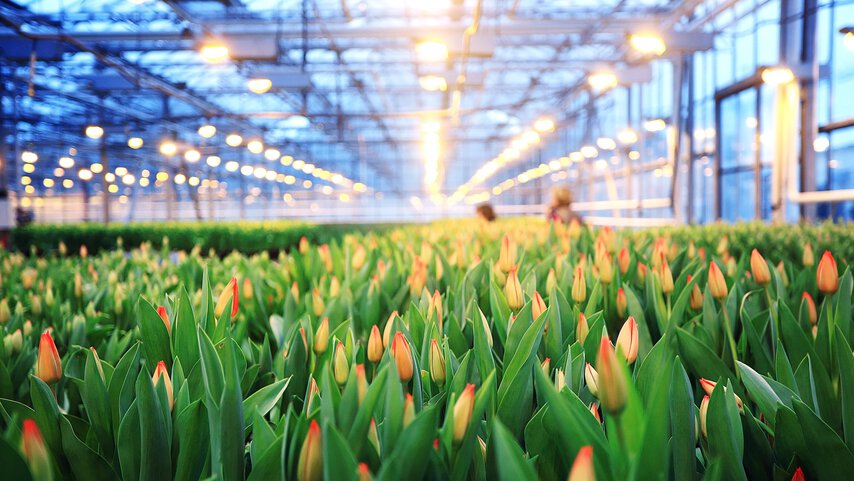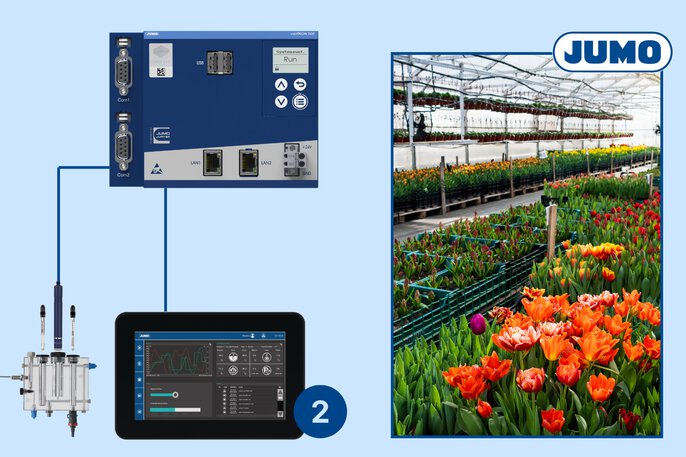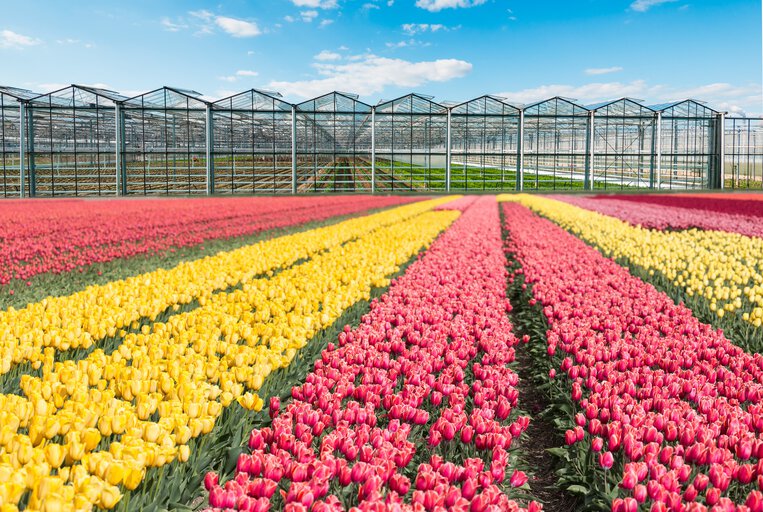

Analysis of irrigation water in greenhouses – pH, redox and chlorine measurement
Can automated physico-chemical water analysis make a real difference to the profitability of greenhouse flower cultivation? In greenhouse tulip production, where water quality determines plant health and yield uniformity, stable measurement and control of key indicators such as pH, redox potential (ORP) or free chlorine levels are particularly important. In this case study, we will show you how the implementation of an automatic monitoring and control system for fertigation water quality allowed you to significantly optimise crop parameters and increase the efficiency of the entire production. You will also learn how the automation of measurements has reduced costs and saved valuable staff time. Check out the details to see how a similar solution could also work in your greenhouse!
How to ensure consistent water quality in greenhouse tulip cultivation? The client's challenge
The client grows cut flowers in the greenhouse, primarily tulips, irises and eustoms. In the cultivation of tulips, it is particularly important that the water used for irrigation has constant, strictly controlled parameters - both in terms of chemical composition and the precise proportions of fertilisers. Tulips have specific requirements, so the client wanted a solution that would ensure the stability of water parameters without the need for constant manual dosing and adjustments. The company expected to automate the process so that staff could manage the system easily and quickly, have full control over the quality of the fertiliser mix, and have remote access to all information on irrigation parameters. Thus, not only a precise technical solution was needed, but also one that was convenient to use, saving the employees' time in their daily tasks.
How to automatically manage irrigation and fertilisation in a greenhouse? Our solution
For our customer, we implemented a fully automatic system for preparing fertiliser-enriched water, based on the JUMO variTRON 500 controller. This is the command centre for the entire greenhouse irrigation process - it collects sensor data, analyses it in real time and controls all plant components in real time.
The system is equipped with high-precision sensors for liquid analysis of pH, redox and free chlorine, which ensure continuous monitoring of the key liquid parameters and, therefore, high water quality for plant irrigation. This ensures that fertilisers are dosed with the right accuracy and that plants receive exactly the conditions they need. Two web-based panels give the customer the ability to easily and conveniently monitor the entire system from anywhere - even outside the greenhouse.
Our solution also integrates pumps and pipelines that work together automatically under the control of the system, ensuring the right pressure and optimal dosage of the fertiliser mixture. The whole system runs smoothly, reliably and precisely, making daily operation of the installation much easier and allowing you to focus on other production-related tasks.

The system for preparing water for plant irrigation consists of a PLC variTRON 500 (705002) and sensors for measuring pH, redox and chlorine
How has irrigation automation increased the productivity of greenhouse tulip cultivation? Customer benefits
Thanks to the automatic irrigation and fertilisation system, tulip cultivation has become easier, more efficient and predictable. Above all, thanks to the physico-chemical testing of the liquid, it was possible to achieve a consistent, precise quality of the water used for irrigation, which directly translated into better plant health. The tulips began to grow more regularly and their quality increased significantly - the flowers were healthier, stronger and more uniform, which is crucial for large-scale sales.
Automation also allowed a significant reduction in manual work. Instead of preparing fertiliser mixtures manually every day, staff now spend much less time testing the water - all they need is ongoing monitoring on online panels. This allows them to concentrate on more important tasks in agricultural production, such as planning the next planting or optimising growth conditions. As a result, greenhouse tulip production is more stable, the flowers achieve better quality and the client has gained the ability to grow the business instead of constantly ‘putting out fires’ in the production processes.
Check out our other greenhouse solutions for measuring electrical conductivity (salinity), among other things!
About the author
My name is Ewelina Szmit and I have been working in content marketing for several years, combining my professional skills with my passion for writing. I am convinced that even the most technical topics can be presented in an interesting and accessible way for everyone. Outside of work, I unleash my creativity by creating newspaper collages. I like to spend my free time being active, walking my dog or running.

Technical specialist
Jakub Dąbrowski - Inside Sales Engineer +48882351471 Jakub.Dabrowski@JUMO.net +48882351471Comments
We encourage you to leave your comments via the form below. They will be posted online once they have been approved through our review process.


